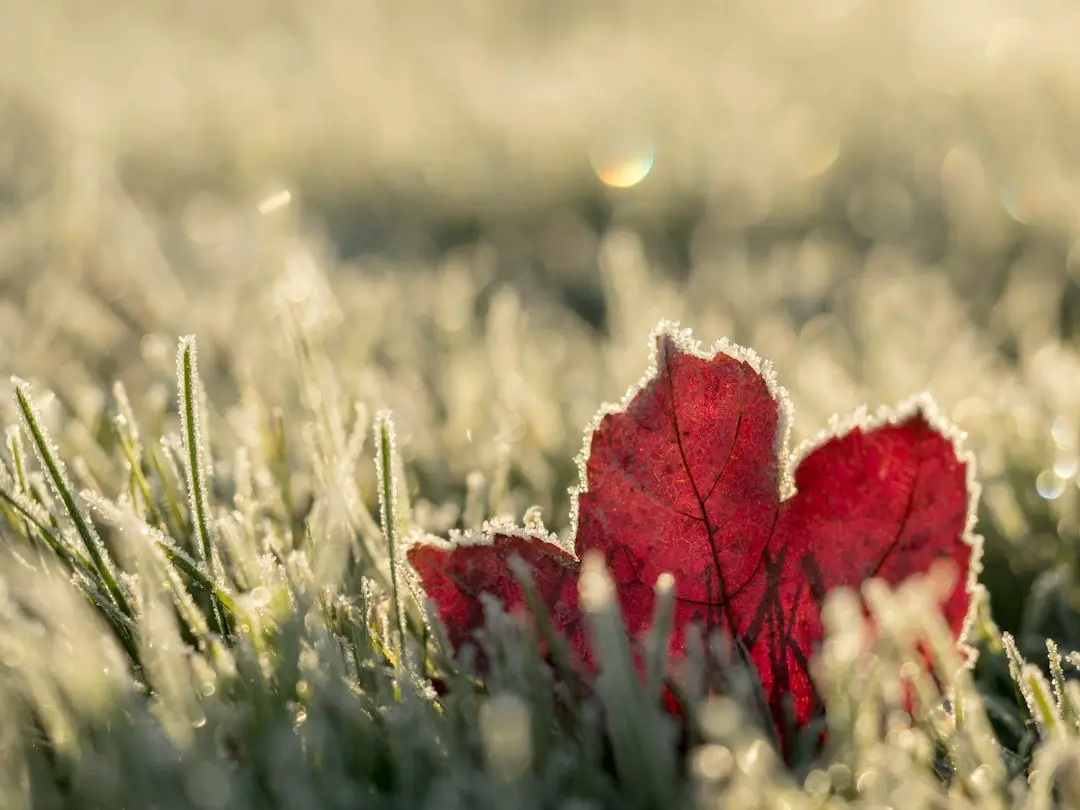Support our educational content for free when you purchase through links on our site. Learn more
How Cold Can Tea Plants Tolerate? [2024] ❄️
Quick Answer: Tea plants can tolerate frost and survive in temperatures as low as -1°F (-18°C). Factors such as plant age, protection measures, and wind conditions can affect their ability to withstand cold temperatures. In the South, where freezes are usually short-lived, tea plants are considered hardy for tropical plants. Ice and snow can act as barriers to freezing temperatures, providing protection similar to an igloo. Tea plants in the ground can survive temperatures down to 4°F (-10°C), influenced by factors such as plant health, freeze duration, cultivar, age, and the presence of snow or ice cover.
Are you curious about how tea plants handle cold temperatures? As tea growers at Growing Teas™, we understand the importance of knowing the limits of tea plants’ cold tolerance. In this comprehensive guide, we’ll delve into the topic and provide you with all the information you need to understand how cold tea plants can tolerate. So grab a cup of tea and let’s dive in! ☕️
Table of Contents
- Quick Answer
- Quick Tips and Facts
- Background: The Cold Tolerance of Tea Plants
- How Cold Can Tea Plants Tolerate?
- Factors Affecting Tea Plants’ Cold Tolerance
- Protecting Tea Plants from Cold Temperatures
- Can Tea Plants Survive Freezing?
- Are Tea Plants Cold Hardy?
- Can Tea Plants Grow in Zone 5?
- FAQ
- Conclusion
- Recommended Links
- Reference Links
Quick Tips and Facts
Before we dive into the details, here are some quick tips and facts about the cold tolerance of tea plants:
✅ Tea plants can tolerate frost and survive in temperatures as low as -1°F (-18°C).
✅ Factors such as plant age, protection measures, and wind conditions can affect tea plants’ ability to withstand cold temperatures.
✅ In the South, where freezes are usually short-lived, tea plants are considered hardy for tropical plants.
✅ Ice and snow can act as barriers to freezing temperatures, providing protection similar to an igloo.
✅ Tea plants in the ground can survive temperatures down to 4°F (-10°C), influenced by factors such as plant health, freeze duration, cultivar, age, and the presence of snow or ice cover.
Now that you have a glimpse of what we’ll be covering, let’s explore the cold tolerance of tea plants in more detail.
Background: The Cold Tolerance of Tea Plants

Tea plants, scientifically known as Camellia sinensis, are native to regions with mild climates, such as China, India, and Japan. These plants thrive in warm and humid conditions, making them well-suited for tropical and subtropical regions. However, tea plants have also shown remarkable adaptability to colder climates, with some varieties being able to withstand freezing temperatures.
Tea plants are evergreen shrubs that belong to the family Theaceae. They have glossy, dark green leaves and produce delicate white flowers. The leaves of tea plants are used to make various types of tea, including green tea, black tea, oolong tea, and white tea. The flavor and characteristics of the tea depend on the specific variety of tea plant, as well as the processing methods used.
Now that we have a basic understanding of tea plants, let’s explore how cold they can actually tolerate.
How Cold Can Tea Plants Tolerate?
Tea plants have a surprising ability to tolerate cold temperatures. While they are typically grown in zones 7 to 10, where the climate is milder, they can withstand frost and survive in temperatures as low as -1°F (-18°C). However, it’s important to note that the cold tolerance of tea plants can vary depending on several factors.
Tea plants in the ground, as opposed to those grown in containers, have a higher chance of surviving colder temperatures. When planted in the ground, tea plants benefit from the insulating properties of the soil, which helps protect their roots from extreme cold. In regions with colder climates, tea plants can survive temperatures down to 4°F (-10°C) when they are well-established and healthy.
The duration of the freeze also plays a role in tea plants’ ability to tolerate cold temperatures. Short-lived freezes, which are common in the South, are less likely to cause significant damage to tea plants. However, prolonged freezes can be more challenging for tea plants to withstand.
The specific cultivar of tea plant can also affect its cold tolerance. Some varieties are more cold-hardy than others, with certain cultivars being bred specifically for their ability to withstand colder temperatures. If you’re considering growing tea plants in a colder climate, it’s worth researching and selecting cultivars that are known for their cold tolerance.
The presence of snow or ice cover can provide additional protection to tea plants during freezing temperatures. Just like an igloo insulates its occupants from the cold, snow and ice can act as natural barriers, shielding tea plants from the harshest effects of freezing temperatures. This is particularly beneficial in regions where snowfall is common during the winter months.
Now that we have a better understanding of how cold tea plants can tolerate, let’s explore the factors that can affect their ability to withstand cold temperatures.
Factors Affecting Tea Plants’ Cold Tolerance
Several factors can influence the cold tolerance of tea plants. Understanding these factors can help you create the optimal conditions for your tea plants to thrive, even in colder climates. Here are some key factors to consider:
1. Plant Age
The age of a tea plant can impact its ability to tolerate cold temperatures. Young tea plants, especially those that have not yet established a strong root system, are more vulnerable to cold damage. As tea plants mature and develop a robust root system, they become better equipped to withstand freezing temperatures.
2. Protection Measures
Taking proactive measures to protect tea plants from cold temperatures can significantly improve their chances of survival. Covering tea plants with cloth or frost blankets during freezes can help shield them from the harshest effects of the cold. These covers can help retain heat and create a microclimate around the plants, providing them with additional protection.
3. Wind Conditions
Wind can exacerbate the effects of cold temperatures on tea plants. Strong winds can strip away the insulating layer of warm air around the plants, making them more susceptible to freezing. Planting tea plants in a location that is sheltered from strong winds can help minimize the impact of cold temperatures.
4. Plant Health
Healthy tea plants are generally more resilient and better able to withstand cold temperatures. Providing your tea plants with proper care, including regular watering, fertilization, and pest control, can help keep them healthy and better prepared to handle freezing temperatures.
5. Freeze Duration
The duration of a freeze can have a significant impact on tea plants’ ability to tolerate cold temperatures. Short-lived freezes, which are common in the South, are less likely to cause severe damage to tea plants. However, prolonged freezes can be more challenging for tea plants to endure.
Considering these factors and taking appropriate measures to protect your tea plants can help ensure their survival even in colder climates. Now, let’s explore some effective ways to protect tea plants from cold temperatures.
Protecting Tea Plants from Cold Temperatures
Protecting tea plants from cold temperatures is crucial, especially in regions where freezes are common. Here are some effective measures you can take to safeguard your tea plants:
1. Covering with Cloth or Frost Blankets
Covering tea plants with cloth or frost blankets is one of the most effective ways to protect them from freezing temperatures. These covers help retain heat and create a microclimate around the plants, shielding them from the harshest effects of the cold. Make sure to secure the covers tightly to prevent them from being blown away by strong winds.
2. Watering until Pots Freeze
Watering your tea plants until the pots freeze can create an insulating ice layer around the roots, reducing the risk of freeze damage. The ice layer acts as a protective barrier, shielding the roots from extreme cold. However, be cautious not to overwater your plants, as excessive moisture can lead to root rot.
3. Planting in Sheltered Locations
Choosing a sheltered location for planting your tea plants can help minimize the impact of cold temperatures. Planting them near a wall or fence can provide additional protection from strong winds. Additionally, planting tea plants in raised beds or containers allows for better control over their environment, making it easier to protect them during freezes.
4. Mulching
Applying a layer of mulch around the base of tea plants can help insulate the soil and protect the roots from freezing temperatures. Organic mulch, such as straw or wood chips, is particularly effective at retaining heat and moisture. Make sure to leave a small gap between the mulch and the base of the plant to prevent rot.
By implementing these protective measures, you can increase the chances of your tea plants surviving cold temperatures and thriving in your garden.
Can Tea Plants Survive Freezing?
Yes, tea plants can survive freezing temperatures, but their ability to do so depends on various factors. As mentioned earlier, tea plants can tolerate frost and survive in temperatures as low as -1°F (-18°C). However, prolonged exposure to freezing temperatures can cause damage to tea plants, especially if they are not adequately protected.
The key to tea plants’ survival in freezing temperatures lies in their ability to adapt and protect themselves. Tea plants have evolved mechanisms to withstand cold conditions, such as the ability to go dormant during the winter months. Dormancy allows tea plants to conserve energy and protect their vital organs until the weather becomes more favorable.
Additionally, the presence of snow or ice cover can provide natural insulation, shielding tea plants from the harshest effects of freezing temperatures. Snow acts as an insulating layer, trapping heat and preventing rapid temperature fluctuations. This natural protection can significantly increase tea plants’ chances of survival during freezes.
Are Tea Plants Cold Hardy?
Tea plants are considered cold hardy for tropical plants, especially in regions where freezes are short-lived. While they are typically grown in zones 7 to 10, tea plants have shown remarkable adaptability to colder climates. With proper care and protection, tea plants can thrive in regions with colder winters.
It’s important to note that not all tea plant varieties are equally cold hardy. Some cultivars have been specifically bred for their ability to withstand colder temperatures. If you’re planning to grow tea plants in a colder climate, it’s advisable to choose cultivars that are known for their cold tolerance. Researching and selecting the right cultivars can significantly increase your tea plants’ chances of survival in colder regions.
Can Tea Plants Grow in Zone 5?
Tea plants are typically not recommended for growing in Zone 5, as this zone experiences colder temperatures that can be challenging for tea plants to tolerate. However, with proper care and protection, it is possible to grow tea plants in Zone 5.
If you’re determined to grow tea plants in Zone 5, here are some tips to increase their chances of survival:
-
Choose Cold-Hardy Cultivars: Select tea plant cultivars that are known for their cold tolerance. Look for varieties that have been bred specifically for colder climates.
-
Provide Winter Protection: Implement protective measures, such as covering tea plants with cloth or frost blankets, to shield them from freezing temperatures. Mulching around the base of the plants can also help insulate the soil and protect the roots.
-
Plant in a Sheltered Location: Choose a sheltered location for planting your tea plants, such as near a wall or fence. This can provide additional protection from strong winds, which can exacerbate the effects of cold temperatures.
-
Consider Container Gardening: Growing tea plants in containers allows for better control over their environment. You can move the containers indoors or to a more protected area during periods of extreme cold.
While growing tea plants in Zone 5 may require extra effort and care, it is possible to create suitable conditions for their survival. Just remember to monitor the weather conditions closely and take appropriate measures to protect your tea plants during freezes.
FAQ

What is the lowest temperature for tea plants?
Tea plants can tolerate frost and survive in temperatures as low as -1°F (-18°C). However, prolonged exposure to freezing temperatures can cause damage to tea plants, especially if they are not adequately protected.
Can tea plants survive freezing?
Yes, tea plants can survive freezing temperatures. Their ability to do so depends on various factors, such as plant age, protection measures, and the duration of the freeze. Tea plants have evolved mechanisms to withstand cold conditions, such as going dormant during the winter months.
Are tea plants cold hardy?
Tea plants are considered cold hardy for tropical plants, especially in regions where freezes are short-lived. With proper care and protection, tea plants can thrive in regions with colder winters. However, not all tea plant varieties are equally cold hardy, so it’s important to choose cultivars known for their cold tolerance.
Read more about “… Cold Hardy Tea Plants for Sale: A Comprehensive Guide”
Can tea plants grow in Zone 5?
While tea plants are typically not recommended for growing in Zone 5, it is possible to grow them with proper care and protection. Choosing cold-hardy cultivars, providing winter protection, planting in a sheltered location, and considering container gardening can increase tea plants’ chances of survival in Zone 5.
Read more about “What US States Grow Tea? …”
Conclusion

Tea plants have a remarkable ability to tolerate cold temperatures, with some varieties being able to withstand freezing temperatures. While they are typically grown in zones 7 to 10, tea plants can survive in temperatures as low as -1°F (-18°C). Factors such as plant age, protection measures, and wind conditions can affect their ability to withstand cold temperatures.
Tea plants in the ground, as opposed to those grown in containers, have a higher chance of surviving colder temperatures. The duration of the freeze, the specific cultivar, and the presence of snow or ice cover also play a role in tea plants’ cold tolerance.
By taking proactive measures to protect tea plants from cold temperatures, such as covering them with cloth or frost blankets and watering until pots freeze, you can increase their chances of survival. Choosing a sheltered location for planting and providing proper care can also contribute to tea plants’ ability to withstand freezing temperatures.
While tea plants are considered cold hardy for tropical plants, it’s important to select cultivars known for their cold tolerance if you’re planning to grow tea plants in colder climates. With the right cultivars and proper care, tea plants can thrive even in regions with colder winters.
We hope this guide has provided you with valuable insights into how cold tea plants can tolerate. Now, go ahead and cultivate your own tea with confidence, knowing that you have the knowledge to protect your tea plants from the cold! 🌱
Recommended Links
- Green Tea Cultivation
- Herbal Tea Planting
- Tea Plant Varieties
- Soil and Climate for Tea
- DIY Tea Blending
- 2023 Cold Hardy Tea Plants for Sale: A Comprehensive Guide




